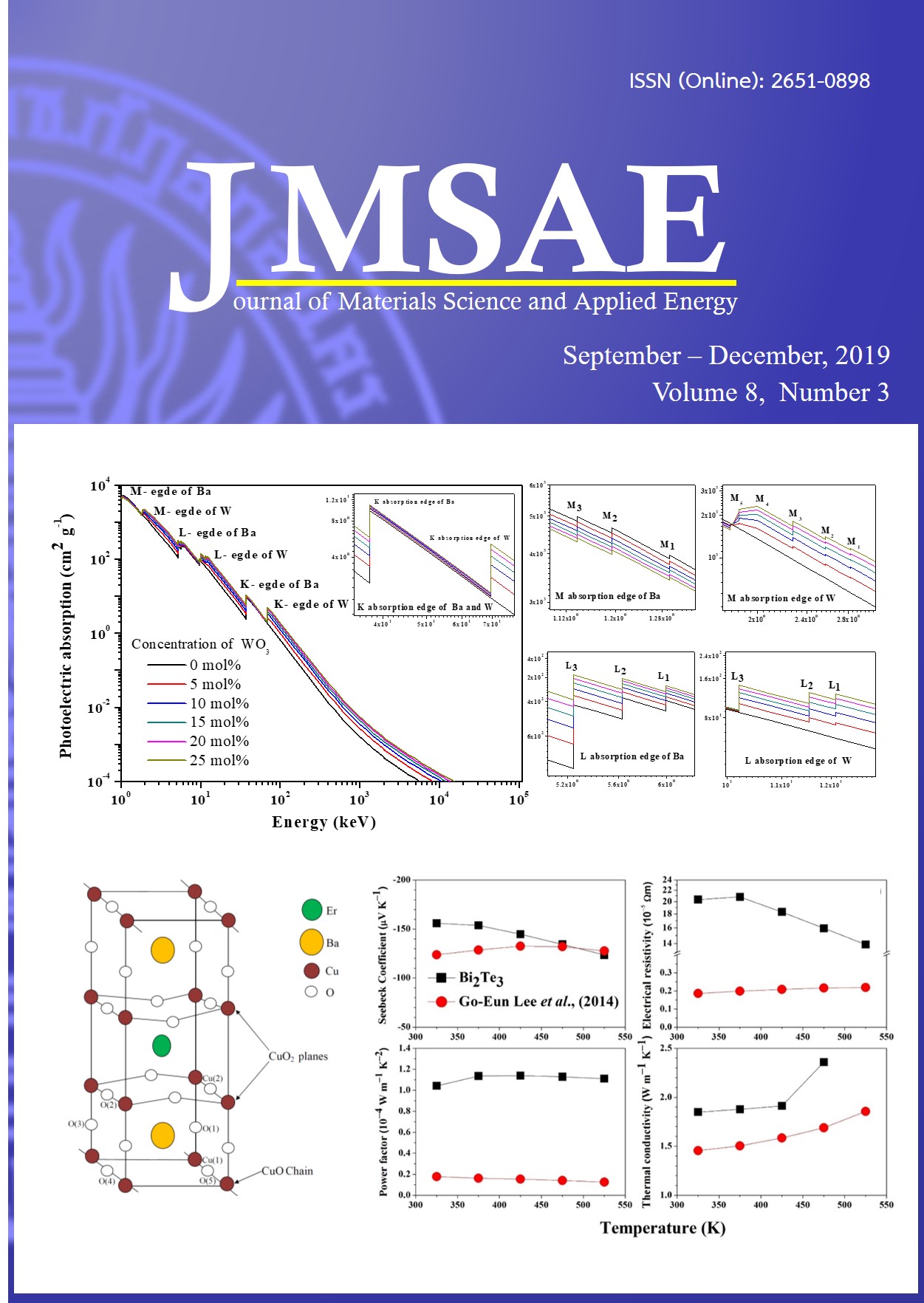Photon Interaction of WO3:BaO:ZnO:B2O3 glasses in energy range 1 keV to 105 keV:Theoretical Calculation
Keywords:
WO3, mass attenuation coefficient, photon interaction, WinXCom, glassAbstract
The photon interaction, mass attenuation coefficient (mm), effective atomic number (Zeff) and effective electron density (Ne) of WO3:BaO:ZnO:B2O3 glasses have been calculated by using WinXCom program in the energy range from 1 keV to 105 keV. The results shown the total and partial interactions varied with the concentration of additive WO3. At low photon energy found that the photoelectric absorption is the main interaction in energy range 1 keV to 103 keV, the values were decreased with increasing of photon energy. The values found to be the raised suddenly near the M-, L- and K- absorption edge of WO3 and show the higher raised when increase WO3 concentration. The coherent scattering has been found in in energy range 1 keV- 102 keV and the values decreased with increasing of photon energy and increased with increasing of WO3 concentration. The incoherent scattering is the main photon interaction process in energy range 101 keV to 103 keV , the values were increased with increasing in photon energy range 1 keV-102 keV and decreased in photon energy range 102 keV to 105 keV and increased with increasing of WO3 concentration. The pair production in nuclear field occurs at photon 1.022x103 keV and it increases with increase in photon energy. The mass attenuation show the peak at low energy regions which corresponding to the photoelectric absorption edge, the values show the increase with increasing WO3 concentration. The results of effective atomic numbers and the effective electron densities have peak are corresponding to the M-, L- and K- absorption edge of tungsten and show the stronger peak when increases the concentration of WO3. These results found to be the same trend with the trend of the mass attenuation.








